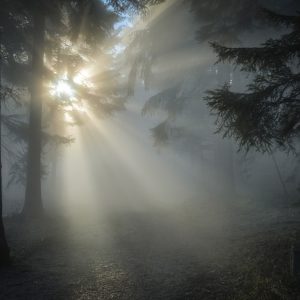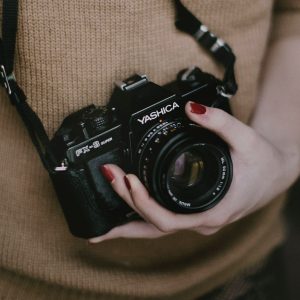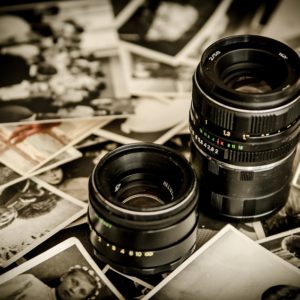Conventional and digital photography are in many ways very similar, but in just as many ways, quite different. Both have their advantages, so in the foreseeable future, there will remain applications for each. Conventional photography using chemically photo-sensitive film is a highly developed system very close to a perfected technology.
Digital photography is a relatively new and radically different technique to film photography which records images in the form of digital (ie. 2 digit or binary) codes. Digital has major advantages over film; but the technology is new and still developing.
In simple terms digital codes are similar to Morse code. One number or digit is indicated by a pulse of electricity, a second digit is indicated by no electrical pulse. By combining these pulses and lack of pulses into codes, we can, for example, create representations for letters of the alphabet; allowing us to write language or text on a computer. When we combine these electrical “pulses” and “no pulses” (or ‘ones’ and ‘zeros’) in more complex combinations, we can create more complex representations. These can include the colour, and degree of darkness or brightness in a single spot on a picture.
AIMS
- Describe the scope and nature of digital photography
- Select appropriate equipment for use in digital photography
- Explain how technology enables digital images to be captured.
- Compare different digital cameras and select an appropriate camera for a particular application.
- Control the effects created in a digital photograph which you take.
- Describe techniques which can be used for digitally capturing images from film photographs, or graphics.
- Explain how digital images can be transferred effectively from a camera (or scanner) onto another device (eg. a computer, video monitor, television set, etc).
- Describe techniques that can be used to process digital photographs within a computer to achieve improved or changed images.
- Explain how digital photos can be manipulated and changed to produce altered images.
- Discuss the scope and nature of special effects that can be created with digital photographs.
- Identify how and where digital photography can effectively be used.
COURSE STRUCTURE
This course is divided into eleven lessons as follows:
- Introduction To Digital Technology – How images are captured and stored, categories of equipment & software, scope of applications
- Equipment – getting started; deciding what you need – CCD’s, Image Sizes, Raster Images,, Video Cards, Colour depth, Computer terminology etc.
- Digital Technology – Colour, resolution, sensors (how technology enables digital images to be captured).
- Digital Cameras – Image formation, lenses, camera stability, one shot cameras, 3 shot cameras, terminology (eg.DPI, DVD, Bit, EDO RAM, Plug In etc)
- Taking Photographs – Principles of Photo Composition, Creating effects, Default Setting, Compression of Data, Dithering, Halftones etc
- Scanners – Techniques which can be used for digitally capturing images from film photographs, or graphics
- Uploading Images – How digital images can be transferred effectively from a camera (or scanner) onto another device (eg. a computer, video monitor, television set, etc).
- The Digital Darkroom – Techniques that can be used to process digital photographs within a computer to achieve improved or changed images
- Compositing & Imaging – Production & manipulation of images – How digital photos can be manipulated and changed to produce altered images
- Special Effects – Scope and nature of special effects that can be created with digital photographs
- Outputs & Applications- Printers, The Internet – How and where digital photography can effectively be used.
WHAT YOU WILL DO IN THIS COURSE
Here are just a few examples of what you may do:
- Investigate software available for processing digital photographs
- Obtain literature on Adobe Photoshop and any two other types of software.
- Compare the different software options which you investigate.
- Develop a check list of what would be required if you were to purchase a digital camera for professional freelance photographic work (such as studio portraits and wedding photography)
- Find five photographs you have taken in the past which have not been as successful as you would have liked. Consider what you might have done to improve the way in which the image was taken in each of these. Consider what advantages digital photography might have offered if you had taken these using a digital imaging rather than film.
EQUIPMENT REQUIREMENTS
You will need access to a digital camera and some type of storage or output device during the course.
This is required so that you can take some photographs on a digital camera and submit them as a print or as a digitised file. An inexpensive digital camera and a printer or 3.5 inch floppy disk would be a minimum. If you plant o purchase a digital camera, but have not yet decided what to buy, it is recommended that you delay buying a camera until you have completed Lesson 3 and commenced Lesson 4. It is also suggested that you ask your tutors advice as to which camera would best suit your needs. Access to a suitable computer is also advantageous but not essential.





